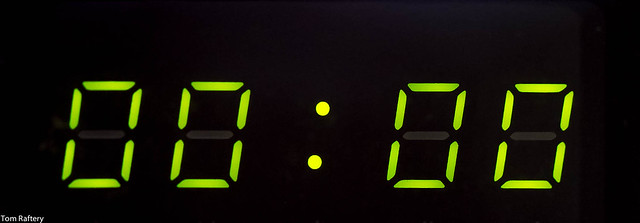In episode 7 of the Technology for Good hangout we had many great news stories to cover, and some great live discussions using the comments on the event page. The links to the stories are below.
As always, if you know of any stories you think we should cover, or someone we should be talking to, feel free to get in touch (@tomraftery on Twitter, or tom at redmonk.com on good old-fashioned email!).
And, here as promised, are the stories which made the cut for episode 7 of the Technology for Good hangout:
Climate change – doom and gloom
- Flood damage cost to rise fivefold across Europe, study says http://www.businessgreen.com/bg/news/2331762/flood-damage-cost-to-rise-fivefold-across-europe-study-says
- Europe’s banks in $1-tril risk from ‘carbon bubble’: report http://www.eco-business.com/news/europes-banks-1-tril-risk-carbon-bubble-report/
- Norwegian government reviews fossil fuel divestment plan http://www.businessgreen.com/bg/news/2331675/norwegian-government-reviews-fossil-fuel-divestment-plan
- Global Warming’s Terrifying New Math http://www.rollingstone.com/politics/news/global-warmings-terrifying-new-math-20120719
- PwC Low Carbon Economy Index 2012 – Too late for two degrees? http://www.pwc.com/gx/en/sustainability/publications/low-carbon-economy-index/index.jhtml
And now on with the good news!!!
- Home computers to help scientists assess climate role in UK’s wet winter http://www.theguardian.com/environment/2014/mar/04/home-computers-scientists-climate-role-uk-wet-winter
- Carbon-taxed companies cut emissions by 7% in past year, investor group says http://www.theguardian.com/environment/2014/mar/07/carbon-taxed-companies-cut-emissions-by-7-in-past-year-investor-group-says
Smart grid and renewables
- Denmark surpasses 100 percent wind power http://energytransition.de/2013/11/denmark-surpasses-100-percent-wind-power/
- Almost a third of new U.S. electricity came from solar last year http://gigaom.com/2014/03/05/almost-a-third-of-new-u-s-electricity-came-from-solar-last-year/
- China Pushes Past U.S. in Smart Grid Spending http://spectrum.ieee.org/energywise/energy/the-smarter-grid/china-pushes-past-us-in-smart-grid-spending
- UK and China seal £20m clean tech deal http://www.businessgreen.com/bg/news/2332772/uk-and-china-seal-gbp20m-clean-tech-deal
Smart health and wearables
- Basis goes to Intel for around $100m http://techcrunch.com/2014/03/03/basis-goes-to-intel-for-around-100m/
- Nintendo starts health business to improve your quality of life http://news.cnet.com/8301-10797_3-57619816-235/nintendo-starts-health-business-to-improve-your-quality-of-life/
- Samsung dives into fitness wearables with the Gear Fit http://www.theverge.com/2014/2/24/5440310/samsung-dives-into-fitness-wearables-with-the-gear-fit
Security
- How a Hacker Intercepted FBI and Secret Service Calls With Google Maps http://valleywag.gawker.com/how-a-hacker-intercepted-fbi-and-secret-service-calls-w-1531334747
- Hackers take control of 300,000 home routers http://www.bbc.com/news/technology-26417441
- Tor is building an anonymous instant messenger http://www.dailydot.com/technology/tor-instant-messaging-bundle/
- Self-Destructing And Encrypted Message App Wickr Raises $9M Series A Led By Alsop Louie http://techcrunch.com/2014/03/03/self-destructing-and-encrypted-message-app-wickr-raises-9m-series-a-led-by-louie-alsop/
- After initial rejection, Cryptocat finally launches on iOS http://www.theverge.com/2014/3/4/5470454/after-initial-rejection-cryptocat-finally-launches-on-ios
Mobile
- After 2 Years In Beta, Findery Launches Its Geo-Tagged Story Sharing App On iOS Worldwide http://techcrunch.com/2014/03/06/after-2-years-in-beta-findery-launches-its-geo-tagged-story-sharing-app-on-ios-worldwide/
- Exclusive: Former Apple CEO John Sculley to launch smartphone brand in India http://www.bgr.in/news/exclusive-former-apple-ceo-john-sculley-to-launch-smartphone-brand-in-india/
Transportation
- This is what Walmart thinks tractor trailers of the future will look like http://www.theverge.com/2014/3/4/5470242/walmart-wave-hybrid-tractor-trailer-concept-revealed
- Apple CarPlay in-car initiative debuts with Ferrari, Mercedes-Benz and Volvo http://www.theguardian.com/technology/2014/mar/03/apple-carplay-ferrari-mercedes-benz-volvo?CMP=twt_gu
Efficiency
- Ask Umbra – who makes the most Eco friendly computers http://grist.org/business-technology/ask-umbra-who-makes-the-most-awesomely-eco-tastic-computers-in-the-land/
Miscellaneous
- Getty Images makes 35 million images free in fight against copyright infringement http://www.bjp-online.com/2014/03/getty-images-makes-35-million-images-free-in-fight-against-copyright-infringement/
- Facebook In Talks To Acquire Drone Maker Titan Aerospace http://techcrunch.com/2014/03/03/facebook-in-talks-to-acquire-drone-maker-titan-aerospace/






